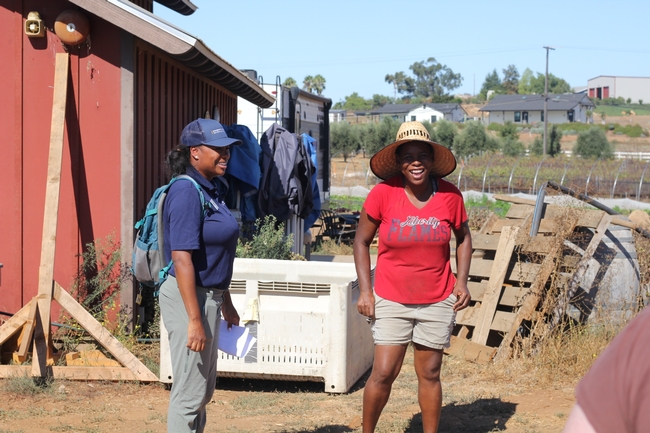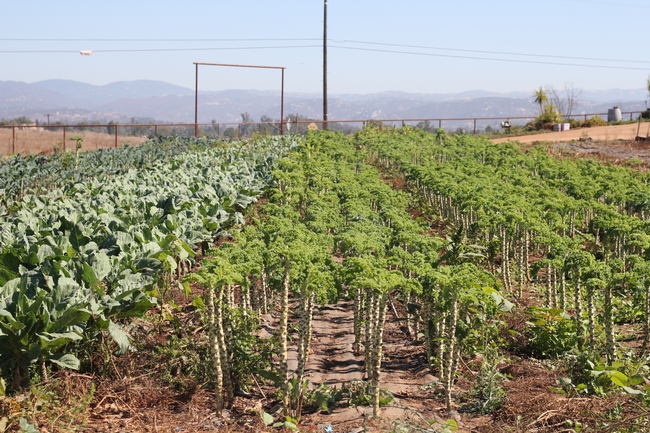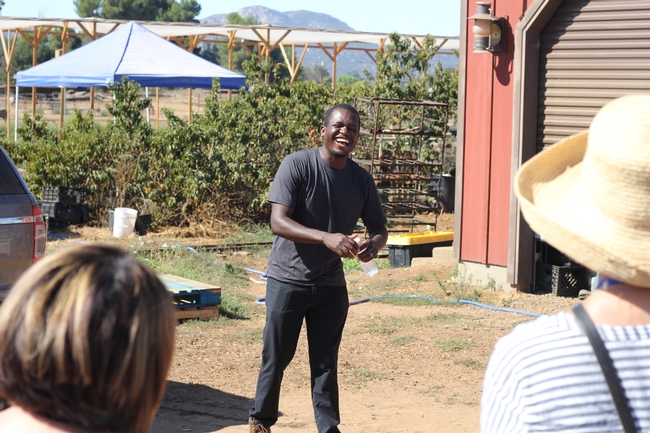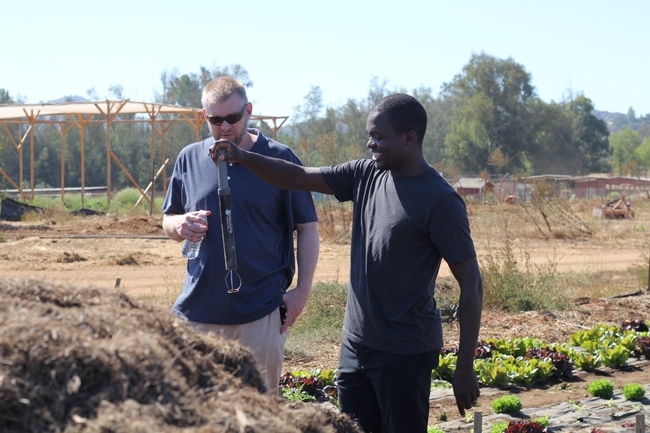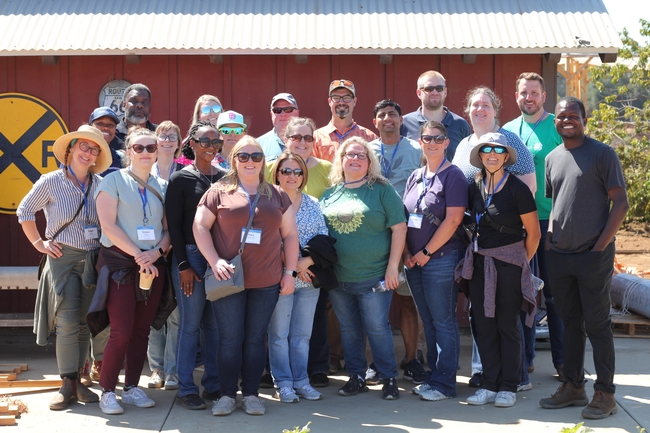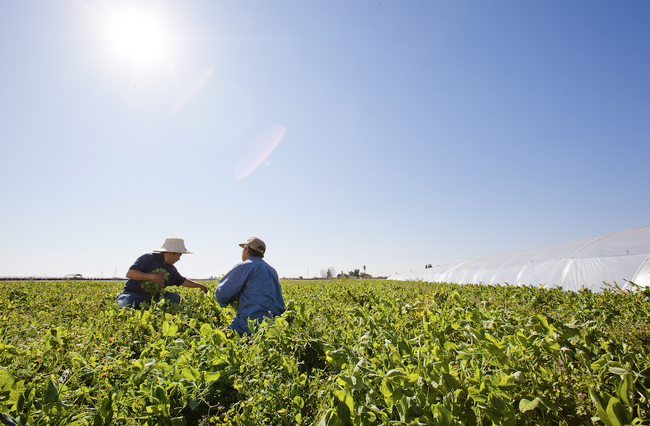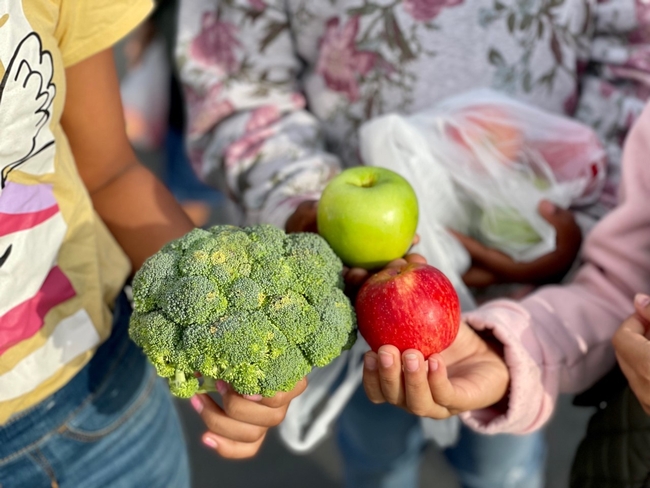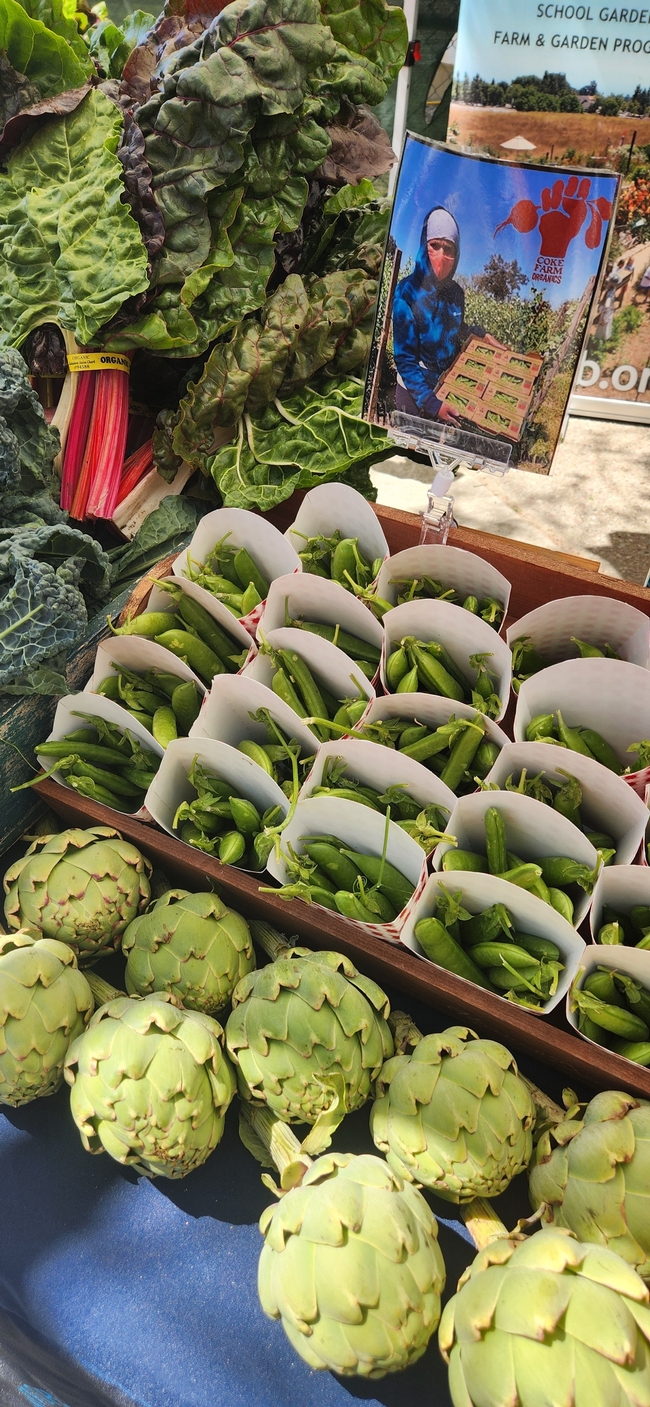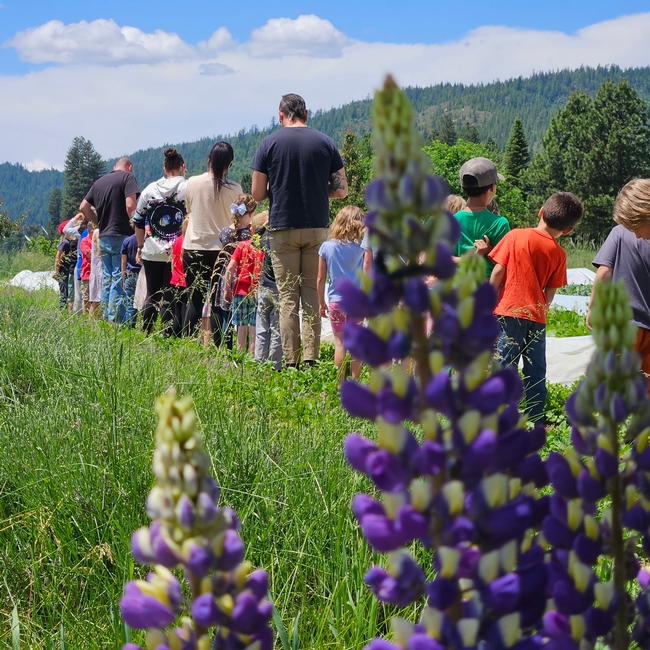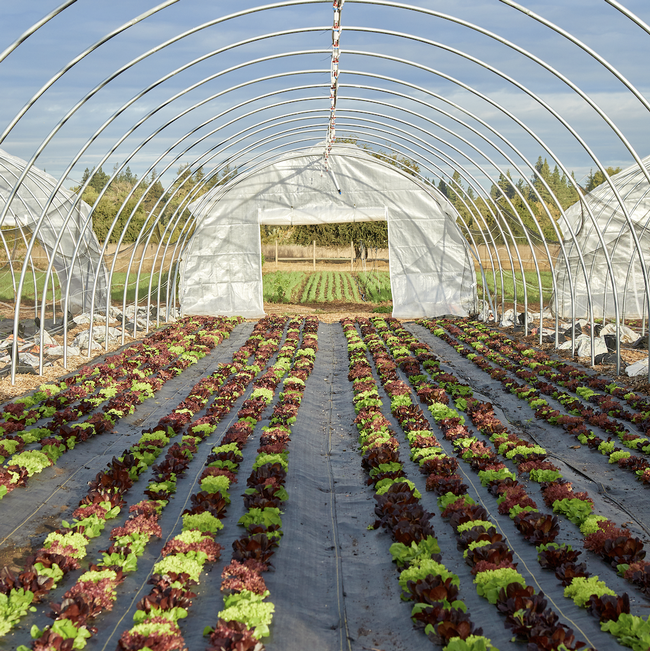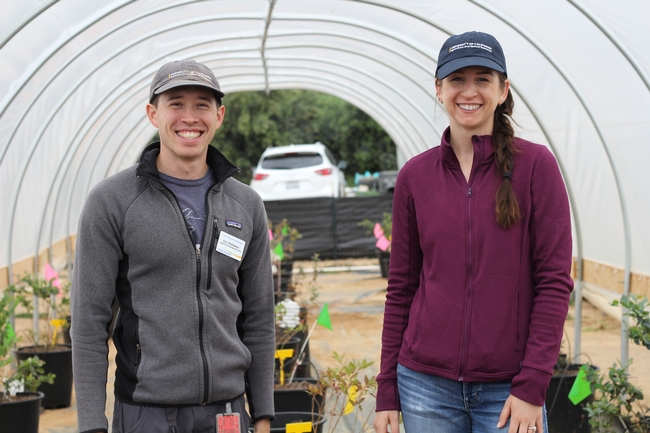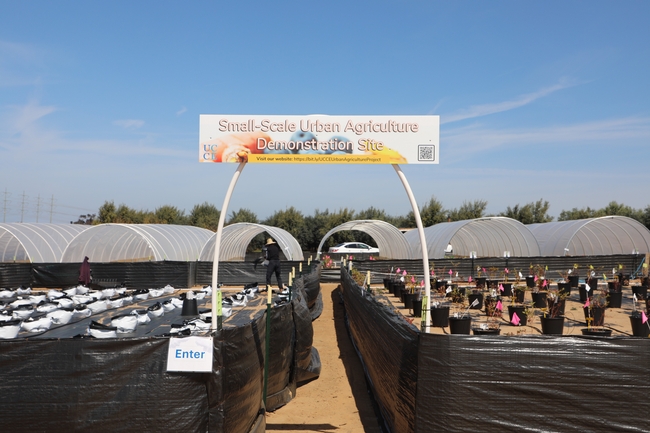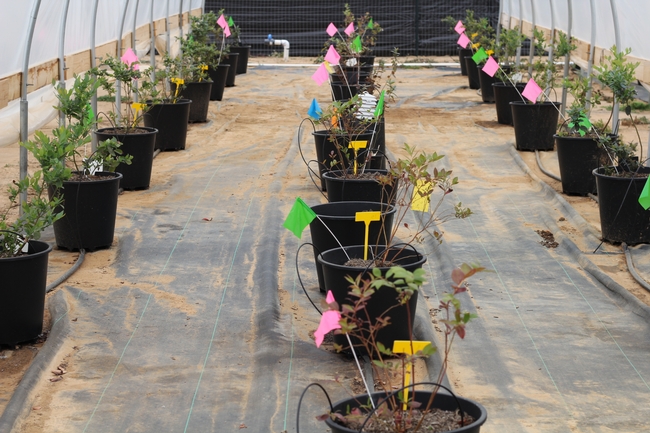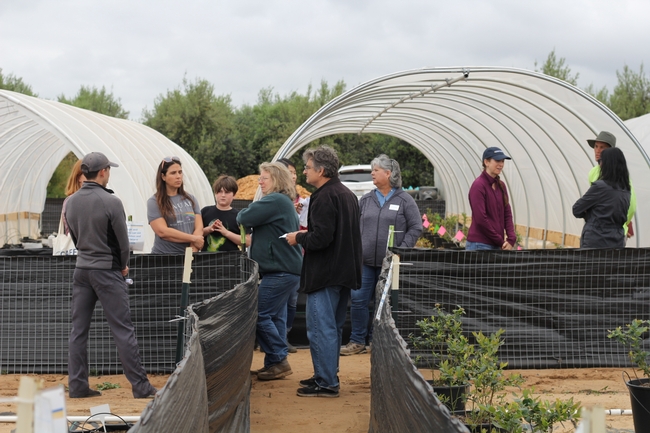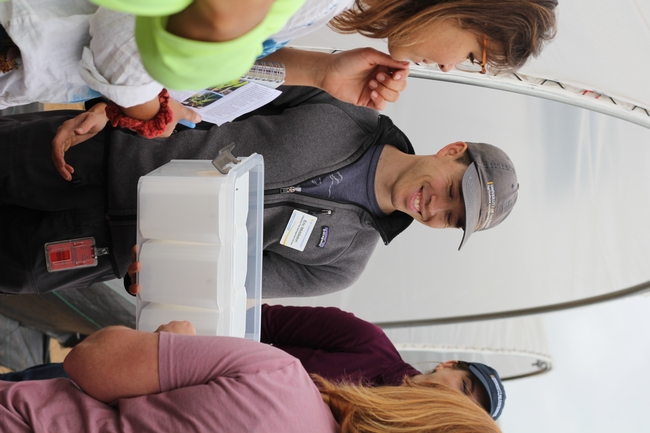Posts Tagged: small
UC ANR project to help underserved farmers in SoCal with land ownership
San Diego County has more than 5,000 small farms but less than 2% are operated or owned by Black, indigenous, or people of color – including those of Asian, Hispanic or Native Hawaiian/Pacific Islander descent, according to the 2022 Ag Census.
The reasons vary, but historically, multiple marginalized communities of color have not received the same opportunities or support for land ownership or management as their white counterparts.
Chandra Richards, University of California Cooperative Extension land equity academic coordinator for the Southern California region, is identifying barriers to equity when it comes to addressing land access, tenure, management and opportunities to increase the diversity of land managers and land ownership in the region.
Richards is the principal investigator for the Climate Action and Land Equity (CALE) project administered through UC Agriculture and Natural Resources and funded by the Department of Conservation. CALE aims to engage historically underrepresented communities in coalition building, capacity assessment and climate action planning. CALE elevates knowledge about the challenges and opportunities to land access and management for a diversity of land managers.
Among the challenges is land tenure, an established agreement between a landowner and tenant, outlining the purpose and use of the land over a period of time. However, when landowners decide to sell their land, these agreements are at risk of being null and void, forcing the tenants to renegotiate or discontinue their operation.
Land tenure leases for under five years are considered short-term, which are common in Southern California. For small, new and under-resourced farmers, landowner turnover doesn't just threaten their business plan but their livelihood.
For small farmer Byron Nkhoma, who leases land in Ramona to grow leafy greens and vegetables, the possibility of losing land is a constant worry. Since 2015, Nkhoma and his wife, Joyce, have been renting four of 20 acres to establish Hukama Produce. Over nine years, they have had two landowners. Before the land was sold to his current landowner, Nkhoma said he considered buying land, but the process proved more challenging than he thought.
“What it takes for someone like Byron to find a place to farm and establish a food system is an extremely involved process,” said Richards. “It's not just learning how to obtain land, it's also about managing that land so it can be used for years and generations to come.”
Originally from Zimbabwe, Nkhoma is adamant about taking care of the land he leases and has applied knowledge from his home to ensure resilience. Hukama Produce prides itself in improving environmental health through sustainable farming practices such as compost and mulch application, drip irrigation and low till. An important pillar of the CALE project includes building capacity and providing technical assistance toward land conservation and climate resiliency.
In addition to land tenure, money and time are stressors for small farmers. When they are not working on the farm, Nkhoma and his wife are researching and applying for grants to improve their soils and protect their crops from pests. However, many grants for which Hukama Produce is eligible often have pressing deadlines that demand their immediate attention – cutting into valuable time that could be spent tending to the land or selling at farmer's markets.
Two of Hukama's goals include building and sustaining trust in the market and growing their operation. By partnering with Richards, Hukama Produce has direct access to technical assistance focused on grant writing and conservation to increase ecosystem health and build tenure.
Agricultural land tenure is the arrangement, rights, and responsibilities centered around use, management, and ownership of agricultural land and resources. Building land tenure means that farmers have a stable place to grow their crops and build environmental sustainability without risk of having to move their operations.
While the CALE project boosts support for historically underserved community members hoping to own or manage land, it prioritizes land use for food production as a reinvestment into the greater community.
Eager to bring realities like Nhkoma's to light, Richards partnered with Keith Nathaniel, UCCE director for Los Angeles County, who co-coordinated the Western Extension Leadership Development conference held in San Diego the week of Sept. 23-27. WELD unites Cooperative Extension faculty, agents, advisors, educators and specialists from the western region of the United States for a two-year leadership development program.
While in San Diego, WELD participants joined Richards for a tour of Hukama Produce and learned directly from Nkhoma about opportunities and threats as a small farmer. The tour ended with participants in a circle, sharing how their professional roles can offer support to Hukama Produce and other small farms.
“We grow food so that we can feed the community,” said Nkhoma. “When we feed others, we build relationships. That's what ‘hukama' means – to grow relationships.”
If you operate or know of a small farm in Southern California and would like to be involved with or receive regular updates about the CALE project, please contact Chandra Richards at cmrichards@ucanr.edu.
If you are interested in applying for the Land Equity Project Manager position, please visit https://ucanr.edu/About/Jobs/?jobnum=2894 for details.
White House Summit explores impact of extreme heat, ways to adapt
UC ANR Small Farms Network supports small-scale and underserved farmers impacted by extreme heat
Ruth Dahlquist-Willard, interim director for the UC Sustainable Agriculture Research and Education Program, joined more than 100 participants from across the country at the first-ever White House Summit on Extreme Heat. Community representatives and practitioners met with federal agency representatives and Biden Administration officials to discuss successful locally tailored, community-driven practices to adapt to extreme heat as well as available federal resources.
According to the National Oceanic and Atmospheric Administration or NOAA, summer 2024 was California's warmest summer on record. As California's climate is changing, episodes of extreme heat are becoming more common, leading to substantial health, economic and ecosystem impacts.
In the agricultural sector, extreme heat events can cause heat illness in farmworkers, crop losses and changes in pest pressure. California crop losses due to drought, wildfire and heat were estimated at $239 million in 2023.
Disaster relief funds are available to help growers recover from lost production due to extreme heat. Since 2021, the UC ANR Small Farms Network has connected small-scale farmers with over $5.8 million in direct-to-producer relief funds for losses related to drought, flooding and other extreme weather events.
To further support small-scale farmers in adapting to the changing climate, Dahlquist-Willard and the Small Farms Network are evaluating how the extreme heat of summer 2024 impacted farmers. Farmers reported anecdotal observations that included:
- Shifting work hours to cooler parts of the day
- Closing farm stands and farmers markets due to extreme heat
- Crops ripening more quickly than expected, impacting harvesting and packing schedules
- Poor fruit set due to extremely high temperatures
The team is working to determine what damage symptoms on small-acreage California specialty crops can be attributed to extreme heat based on scientific literature and assessments from UC ANR colleagues. Understanding the impact of extreme heat on the farming community can help inform research and policy, ultimately equipping farmers with strategies to adapt to extreme heat events.
“It was inspiring to meet with leaders from around the nation who are working to support communities impacted by extreme heat and learn about the creative solutions they are implementing,” said Dahlquist-Willard. “The challenges faced by these communities make it all the more important to continue to work against climate change by reducing greenhouse gas emissions, as well as to develop new methods and resources to mitigate the effects of extreme heat and other climate impacts.”
The Extreme Heat Summit highlighted the Biden-Harris Administration's investments in climate reliance and put forth an Extreme Heat Call to Action calling upon public and private sectors to prepare for future extreme heat events. Communities and governments interested in participating are asked to use all available tools to protect people from extreme heat. Approaches and tools which could be used to protect people and resources from extreme heat are highlighted in the U.S. Climate Resilience Toolkit and the National Heat Strategy. Submissions for the Call to Action will be accepted through Nov. 1, 2024.
Further reading:
Heat Illness Prevention, UC Davis Western Center for Agricultural Health and Safety
Pathak et al., 2018. Climate Change Trends and Impacts on California Agriculture: A Detailed Review
UC's New Climate Action Goals: Frequently Asked Questions
Investments in farm-to-school program stabilize farms, expand climate-friendly farming practices
Small and midsize farms, women and BIPOC farmers especially benefit
A new report reveals that California farmers participating in the state's Farm to School Incubator Grant Program are increasing sales of fresh, local and organic produce, meat and dairy products to schools, according to researchers evaluating program impacts. The report found that 57% of the program's farmers made sales to schools between April and September 2023, representing an average of 33% of their total farm revenues. All food producers funded by the Farm to School Grant Program state that they use or plan to use climate-smart agricultural practices in their operations during the grant period.
While existing research shows that kids who engage with farm-to-school programs eat more fruits and vegetables, are more willing to try healthy foods, and even perform better in class, the California farm-to-school evaluation project examines a gap that most farm-to-school research hasn't addressed: how local purchases from schools affect the agricultural sector and the environment.
The report found that the investments are flowing primarily to the farmers the state seeks to support through this program: Of the 50 producer grantees evaluated in this report, 42% are owned by people who identify as Black, Indigenous and People of Color, and 62% are owned by women. Nearly all (94%) are small to midsize operations.
Three producer grantees revealed that the Farm to School Incubator Grant Program funding likely prevented them from going out of business. “This grant … has and will enable us to do things on the farm that would probably take us a decade to do but we'll be able to do that in one or two seasons. So [it] really moves us forward a lot,” noted one farmer.
Beth Katz, a lead researcher and executive director of Food Insight Group, said, “Farmers are expanding their relationships with local school districts, increasing their sales to schools, investing in infrastructure and staff, and forming new relationships with food hubs that can help them with the often complex purchasing requirements unique to school food. While we're still at a very early stage of understanding the impacts of these investments, we're beginning to see patterns emerge.”
A Humboldt County farmer noted that food hubs, which are also supported by the grant program, are critical to their success in accessing the school food market: “[The food hub] is really a huge game changer to be able to make that one drop in town, even though it's an hour away, rather than going to [several school sites] and just making all these little drops. That's been one of the ways that it's very . . .appealing to us as a farm to participate.”
The report also examines the potential for environmental impacts through direct investments in farmers who use climate-friendly farming practices.
“I'm inspired by the potential for the farm-to-school program to support farmers using environmentally beneficial practices like reducing pesticides, planting cover crops and growing organic — and to help farmers expand or adopt these practices. It's essential these farmers have a market for what they grow to see durable environmental benefits,” said Tim Bowles, who is leading the environmental impacts assessment for the evaluation team and is an assistant professor in the Department of Environmental Science, Policy & Management at UC Berkeley and lead faculty director of the Berkeley Food Institute.
“We're also seeing farms actually expand their acreage in order to sell to schools, suggesting this is a desirable market. We're investigating the environmental impacts from these investments, especially for climate,” Bowles said.
As with many new programs aimed at building out long-delayed infrastructure, school food systems improvement demands a deep-rooted approach.
“The challenges around changing a complex school food system are substantial,” Gail Feenstra, a pioneer in farm-to-school research and co-lead on the project from UC ANR stated. “Decades of research shows the value to children from fresh, locally sourced food. However, what is becoming more clear from this research is that long-term investments in the full farm to school system are crucial. Without regional-level infrastructure, staffing, aggregation and distribution in place to support getting that locally grown food from farms to the schools and kids, we'll have challenges moving the needle.
"Fortunately, the state's strategic and innovative investments in the entire farm to school supply chain – meaning funding for school districts, farmers and also their regional partners, combined with support from CDFA's regional staff – are beginning to address those long-standing challenges.”
Could empty lots be growing food, economic opportunity?
UCCE scientists study feasibility of specialty crops for small urban growers
The vacant lots around your neighborhood could be growing fruits and vegetables and making local produce more accessible – while reducing energy needed to transport and distribute the food. Could turning those empty lots into small farms also become opportunities for economic development?
To answer this question, a team of researchers from University of California Cooperative Extension in San Diego County are investigating the economic feasibility of growing high-value specialty crops in urban settings like vacant lots. The project – led by Eric Middleton, UCCE integrated pest management advisor for San Diego, Orange and Los Angeles counties – is currently in progress at The Flower Fields in Carlsbad, a seasonal attraction for locals and tourists.
Tucked away in the back of the field is the Small-Scale Urban Ag Demonstration Site where Middleton and his team established a small farm on approximately 17,000 square feet, starting fall 2023. Funded by the U.S. Department of Agriculture National Institute of Food and Agriculture, the farm is designed to evaluate containerized production both outdoors and under high tunnels.
Growers don't necessarily need land, just space
High tunnels, also referred to as hoop houses, are semi-permanent structures that act similarly to greenhouses in providing a controlled environment. For the experiment, Middleton will compare cost, effort and durability of two types of high tunnels: one made of steel and the other out of PVC pipes.
“We want to give interested growers information on as many options as we can,” said Middleton, who explained that the project is motivated by the challenges of urban settings, including limited space and lack of arable land.
In the trial, they are growing turmeric, ginger and blueberries. The high-value crops were selected because of their potential to earn a profit. Data evaluating plant variety, soil mix, fertilizer, growth performance, yield and pest and disease pressures will be collected and reported when the project concludes in 2026.
As the crops develop in containers – blueberries in pots and turmeric and ginger in grow bags – Middleton pointed out the mobility aspect of the study, noting that growers don't necessarily need land, just space.
Whether it's a backyard or a rooftop, containerized production means easier transport, especially since vacant land doesn't always remain vacant forever and urban lots may often need soil remediation. Growing in containers solves the anticipated problem of having to relocate.
Where to set up shop in San Diego County
Jan Gonzales, project coordinator and community education supervisor for UCCE San Diego County, is leading the effort to identify available urban land in San Diego County as well as the policies and procedures for growers to access these spaces.
Gonzales is collaborating with community members who are working on similar projects to identify space for prospective growers.
“This has been done before for different objectives and for specific areas in the region, but the information was either project-specific and not publicly available, or not easy to find,” Gonzales said.
Having spoken with people associated with previous or ongoing agricultural land mapping projects, Gonzales has agreed to coordinate and facilitate an advisory work group to discuss areas of potential collaboration and develop project efficiencies. She anticipates holding the first group meeting before the end of the summer.
A production guide to help community members re-create the project
The ideal audience for a study like this is anyone who wants to grow specialty crops, according to Lindsey Pedroncelli, interim director of UC South Coast Research and Extension Center in Irvine, who worked on the project alongside Middleton when she was a staff research associate with UCCE San Diego.
“If you're a new grower or a grower who wants to diversify your crop production, what we're learning here can be applied to you,” said Pedroncelli.
Pedroncelli has been instrumental in bringing the experiment to life and documenting its step-by-step workflow thus far. The production guide, which is being created as the study unfolds, will include instructions detailing how to replicate the experiment from the ground up. Currently, it contains information on how to design your farm, the materials to buy, building structures, irrigation setup and crop management.
The most intriguing open question, whether the operation is profitable, is the driving force behind the production guide and will certainly be addressed, Pedroncelli said.
Book a tour and visit the farm
When visiting the farm, you'll encounter three varieties of blueberries: Star, Snowchaser and Misty. Snowchaser has been a top producer since it was planted in January, but the variety is known to be an early season producer.
Using only one variety of each, the turmeric and ginger were planted in late March-early April. With some unanticipated cold weather in San Diego County, both crops struggled when transitioning out of dormancy, leading to very slow progress, which the team is still navigating today.
Visually, Middleton and his team have noticed differences between the crops growing under the high tunnels versus those grown outdoors, although the data has not been analyzed to confirm or explain notable differences.
Attempting to demonstrate how to profitably grow high-value crops in urban settings using limited space and resources, Pedroncelli said she hopes this study will also encourage people to grow culturally significant crops for their communities.
To tour the Small-Scale Urban Ag Demonstration Site at The Flower Fields in Carlsbad, email Eric Middleton at egmiddleton@ucanr.edu with "Urban Agriculture Demonstration Site Tour" in the subject line.
To learn more about the project and its progress, visit https://ucanr.edu/sites/socalIPM/Small_Scale_Urban_Agriculture_Project_/.
Lawn-pocalypse! Surviving Drought
Ah, summer! The season of sunburns, pool parties, and… lawn droughts. If your once lush, green carpet now looks like a crunchy brown doormat, you're not alone. Let's dive into why your yard is staging a dramatic death scene and what you can do to...

Bermuda grass and weeds overtaking drought stressed turf grass.

